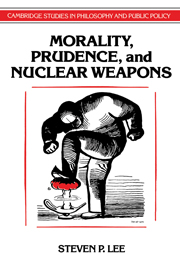1 - The difference nuclear weapons make
Published online by Cambridge University Press: 06 July 2010
Summary
Nuclear weapons have so changed our world that much of the truth does not make sense.
Robert Jervis'Nuclear weapons have increased fantastically the amount of destructive force available for human use. The first atomic bombs were one thousand times more powerful than the largest conventional explosives, and the first thermonuclear bombs were one thousand times again more powerful. The weapons in the nuclear arsenals of the United States and the Soviet Union in the 1980s represented a destructive force of roughly 15 billion tons of conventional explosive. This increase of several orders of magnitude in destructive force may well have fundamental implications for the traditional ways in which military force has been applied in human affairs and for the institutions for which and through which such force has been called into being. The employment of destructive force – both its use and its threatened use – plays a major role in the relations among nations. How suitable are nuclear weapons for this role? Do nuclear weapons make a difference in the justifiability of the employment of military force?
Nuclear weapons have been developed and deployed in pursuit of the traditional military goal of national security. Military activity in pursuit of national security is subject to appraisal in terms of norms or evaluative standards, both prudential and moral, that are internal to the institutional framework through which this activity is carried out. Some military activity is justifiable in terms of these institutional norms and some is not. When the question arises whether certain military activity is justifiable, it is to these norms that appeal should first be made.
- Type
- Chapter
- Information
- Morality, Prudence, and Nuclear Weapons , pp. 1 - 33Publisher: Cambridge University PressPrint publication year: 1993



